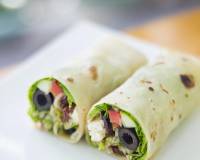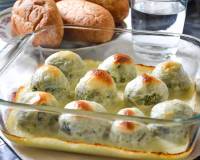Cheese is basically the coagulation of milk protein called casein through adding molds or enzymes, or enhancing the natural acidification of milk. There are more than 1500 variety of cheese found in the world with varied techniques of cheese-making. They vary in their taste from sweet, sour, salty, to pungent and stinky. Method of making cheese is an art that differs with the type of cheese desired. History tells that Cheesemaking originated in Europe, Central Asia or Middle east, but today, cheese is considered as a drooling inclusion in many recipes across cuisines. Cheese can broadly be classified into Quick cheese, Fresh cheese, ripened cheese.
Prominence of Cheese Consumption
- Cheese also is a nutritive blend of protein, few minerals, and vitamins like A, B2, and B12.
- Cheese provide high-quality protein needed to build stronger muscles
- Cheese is also a good source of calcium
- Up to 40 grams of cheese consumption per day is good for meeting our daily dairy requirements, along with milk and yogurt
- Good for lactose sensitive people since all the lactose is metabolized, especially in hard and aged cheeses
- Harder cheese and cheeses with reduced fat content can be used to reduce calories and enjoy the taste of cheese
You can find some of the cheeses in India at Godrej Natures Basket or Food Hall (offline stores) and in the USA ( Trader Joe's or Whole Foods Market)
Quick Cheese
Quick cheeses are achieved by coagulating milk protein quickly, by adding lemon juice, tartaric acid, or whey of other cheeses. Texture is usually creamy to firm and can usually be consumed on the same day of preparation. Mascarpone, Paneer or Cottage Cheese, and Ricotta are some of the quick cheeses.
Soft Cheese
Fresh soft cheeses are achieved by using rennet to coagulate milk and lactic acid to achieve the desired acidity to produce color, flavor and texture needed. Fresh soft cheese like cream cheese or feta is ready to eat in 2-3 days. Aged soft cheese like blue cheeses are added with other strains of biological agents and molds and ripened for weeks or several months.
Hard Cheese
Cheddar, Romano, Gouda and Parmesan are cheese with a stronger, concentrated and sharper flavor to that of the fresh ones. The aged cheese contains less lactose and hence are friendlier to digestive system. Also mozzarella like cheese undergo hot stretching process to achieve the pull that we experience while biting into pizza or pull apart breads. Other processes like pressing, re-pressing, brining, oiling, salting, rubbing with spices or waxing are all practiced to achieve different grades of hard and aged cheeses.
Vegan Cheese
There are attempts at making vegan-friendly cheese from culturing nut extracts as well. Though they differ slightly in taste from the dairy-based cheeses that are available, these vegan cheese are still palatable for dairy-reluctant and vegan consumers.
Delectable Recipes With Cheese
Cheese is included in various cuisines to create scones, tart, quiche, strudels, ravioli, pasta, pizza, lasagne, various dips and salads. We have listed 20 wonderful and varied recipes that contain cheese. Try them to get into a mood of cheese taster yourself. Though you need a good fromagerie (cheese shop) to buy gourmet cheese since not all forms of cheese are easily available, you would have cheese tales to tell your peers and children if you indulge in many of them.









































